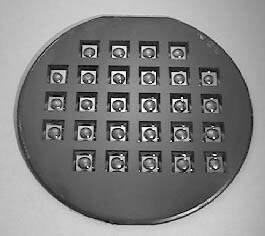Nanotechnology & Micro Electrical-Mechanical Systems

What is Micro Electro-Mechanical Systems? MEMS (coined in late 80's) stands for microelectromechanical systems, and used to mean micron-sized, transducing (electrical to mechanical and vice versa) devices and systems during late 80's and early 90's. But nowadays MEMS covers many non-electromechanical systems such as microfluidic, biological, chemical systems built on silicon, glass and plastic substrates using technology involving micromachining, photolithography, and thin film technologies. The size covered in MEMS also varies from nanometer to millimeter. MEMS has its technological roots in IC fabrication technology, but involves some novel fabrication techniques such as bulk/surface micromachining, deep dry etching of silicon, LIGA, etc. MEMS technology is now clearly perceived as a generic technology that can enable and/or enhance many systems for inertial sensing, micro total biological/chemcial analysis, optical networking, telecommunication, etc. Some commercial examples of MEMS include accelerometers, pressure sensors, micromirror array for projection display and optical networks, etc.
Topic Areas
Faculty
Nanotechnology and Micro Electrical Mechanical Systems

Stephen Burke Cronin

Rehan Kapadia

Mercedeh Khajavikhan

Yasser Khan

Eun Sok Kim

Daniel Amihud Lidar

Wei Wu

J. Joshua Yang



